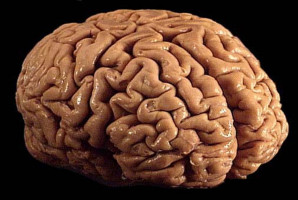
A water-soluble, luminescent europium complex enables the evaluation of malignancy grade in model glioma tumour cells.
An important part of choosing the most suitable cancer therapy is understanding the malignancy of the tumour; however, current methods for evaluating brain tumour malignancy are invasive and have a high risk of complications. Collaborative research led by Professor Yasuchika Hasegawa and Professor Shinya Tanaka of the Institute for Chemical Reaction Design and Discovery (WPI-ICReDD) at Hokkaido University have developed a non-destructive cancer grade probing system (GPS) for evaluating the malignancy grade of model glioma tumour cells using a water-soluble, luminescent europium complex. This method could lead to non-invasive tests for the determination of tumour malignancy in patients.
The team evaluated tumour malignancy by introducing the europium complex to model cells that mimic glioma, a common type of tumour that accounts for 26.3% of brain cancers (Source: CBTRUS). Three different model cells that mimic different grades of malignancy were tested, and researchers measured changes in the lifetime of the europium complex’s characteristic red-light emission. Researchers found that during the first three hours after adding the europium complex, larger changes in the lifetime of the light emission occurred in the more malignant cells.
“Visualization of cancer cells using luminescent complexes has previously been reported, but our hypothesis was that the photophysical signals sent by such complexes in cancer cells might reflect internal information from the cancer cells,” said Hasegawa.
To achieve this result, researchers first modified the europium complex so that it would be water-soluble and stable among the amino acids in the cell culture medium. Upon addition to the cell culture medium, the europium complex initially forms an aggregate with itself. Interaction with model tumour cells results in the aggregates breaking into single molecules, which are then rapidly taken up by the cells. This process promotes structural changes in the europium complex, which cause changes in the lifetime of the complex’s red-light emission.
These differences in emission lifetimes were attributed to the varying tumour activity and growth processes of the different malignancy grades, which could cause different structural changes at different time scales in the europium complex. The team anticipates that using this method could enable continuous detection of tumour activity and provide doctors with key information when deciding appropriate treatment.
“Brain tumours occur in 4.6 out of every 100,000 people in Japan, and the 5-year survival rate is 16% for the most malignant grade 4 type of glioblastoma, which is an aggressive type of glioma brain tumour,” explained Tanaka. “The malignancy evaluation method we developed may be able to benefit these patients in the future.”
Source: Institute for Chemical Reaction Design and Discovery (WPI-ICReDD), Hokkaido University
We are an independent charity and are not backed by a large company or society. We raise every penny ourselves to improve the standards of cancer care through education. You can help us continue our work to address inequalities in cancer care by making a donation.
Any donation, however small, contributes directly towards the costs of creating and sharing free oncology education.
Together we can get better outcomes for patients by tackling global inequalities in access to the results of cancer research.
Thank you for your support.